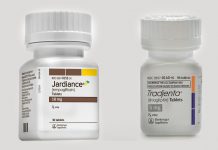Researchers have found that a type 2 diabetes drug called canagliflozin (Invokana) has been found to significantly lower the risk of kidney failure and kidney disease.
The findings have come from a clinical study that was conducted on more than 4,400 people across 34 countries. The study was conducted to highlight a more effective way to protect diabetics from severe diabetes complications.
In addition to decreasing the risk of kidney failure and kidney disease, canagliflozin has also been found to slash the risk of cardiovascular issues.
Uncontrolled diabetes can pave the way to severe and potentially life-threatening medical issues, including a stroke, heart attack, kidney disease, and even death.
Canagliflozin has already been prescribed to help prevent cardiac events in type 2 diabetics. It is also recommended to reduce blood sugar levels in patients with type 2 diabetes.
The U.S. Food and Drug Administration (FDA) has approved canagliflozin for lowering blood sugar and reducing cardiovascular risk.
The findings from a clinical study involving the medication and its prophylactic effect against kidney failure/disease give new insights about potential benefits offered by Invokana.
The study participants who received canagliflozin were found to be nearly 30 percent less likely to develop renal disease or die from kidney failure or cardiovascular disease.
When researchers look specifically at diabetic nephropathy, study participants who received the medicine were 34 percent less likely to have kidney failure or die from it, while the risk of hospitalization and death from heart disease dropped by 31 percent. The findings have come at a very crucial time when experts believe that the cases of type 2 diabetes are expected to reach 510 million by 2030, a 20 percent rise from the current scenario.


















